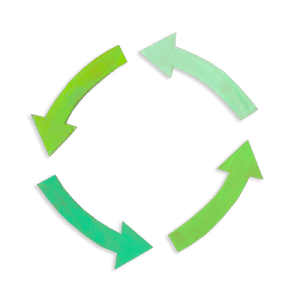
Overview
Watch your students become scientists, using their observation skills to collect data about how energy is being used around the school.
Instructions
What you'll need
- Clipboards for each student
- “Energy at school” worksheet for each student
- "Students as scientists assessment" sheet
Talk about energy
- Engage your students in a discussion of what energy is and what they know about it. Have them provide examples of ways they use energy at school and in their daily lives.
- Explain that we use energy every day for many different things: to drive our cars, light our rooms, heat our homes and even fuel our bodies.
- Let students know they are going to act like scientists to explore how we are using energy in the school.
Think like scientists
- Have students work in pairs to complete the “Energy at school” worksheet. Each student uses their own worksheet and clipboard.
- Point out that good scientists work quietly, so no one knows they are observing.
- Remind students that scientists record their observations to tell other scientists what they discovered.
- Discuss safety with students before they collect their data.
- Clarify that energy is being wasted only if something is plugged in or turned on, but is not being used.
- For example, energy is being wasted if a light is on but nobody is in the room.
- Ask students for other examples of energy being wasted.
- Show the students how to fill in the “Energy at school” worksheet.
- A “check mark” means that something is on, but no one is using the device. For example, the lights are on but there are no students in the room.
- Tell the students to record the room or location where they are making their observations on the chart.
- Give students 10 to 15 minutes to go around the school and fill in their worksheets as they investigate how energy is used.
Back in the classroom
- When the students return, have them share their results with the entire class.
- Create a class chart or list collecting all the data the students have collected.
- Discuss with the students ideas about how to use the information. Keep a list of their ideas.
- What should we do now?
- Who could we share our data with?
- Ask students what they think it means to conserve energy.
- Conserving energy means being smart about how we use energy and making sure we don’t waste it.
Modify or extend this activity
Extensions
- Use the ideas generated in this activity to plan energy-saving actions in your classroom or school.
- Have students complete a journal entry about their investigation. They can write something or draw a picture about what they learned or an observation of themselves collecting data.
- Explore different ways to represent the data. Some ideas include bar graphs, pictographs, tallies and charts.
Curriculum Fit
Grade 2, 3 English Language Arts
Curricular competencies
Comprehend and connect
- Engage actively as listeners, viewers, and readers, as appropriate, to develop understanding of self, identity and community
Create and communicate
- Exchange ideas and perspectives to build shared understanding
Grade 2 Science
Curricular competencies
Questioning and predicting
- Demonstrate curiosity and a sense of wonder about the world
- Observe objects and events in familiar contexts
- Ask questions about familiar objects and events
Planning and conducting
- Make and record observations
Processing and analyzing data and information
- Experience and interpret the local environment
- Sort and classify data and information using drawings, pictographs and provided tables
Grade 3 Science
Curricular competencies
Questioning and predicting
- Demonstrate curiosity about the natural world
- Observe objects and events in familiar contexts
- Identify questions about familiar objects and events that can be investigated scientifically
Planning and conducting
- Make observations about living and non-living things in the local environment
- Collect simple data
Processing and analyzing data and information
- Experience and interpret the local environment
- Sort and classify data and information using drawings or provided tables
- Use tables, simple bar graphs, or other formats to represent data and show simple patterns and trends
Assessments
- Monitor student activities during the investigation process using the “Students as scientists assessment”.
- Have students self-assess their skills as scientists with the “Scientist self-assessment” in their "Energy at school" worksheets.
Teaching Notes
- Students in Grade 2 and Grade 3 love the idea of being scientists and moving quietly around the school to observe what’s happening. Develop a class chart that lists the attributes of scientists doing research:
- Work slowly
- Observe everything around you
- Talk to other scientists about what you discover
- Take notes
- Draw pictures to show your observations
- There are blank spaces on the “Energy at school” worksheet. Add important items that are specific to your school before making copies for students or remind students to write down things they see that aren’t on the list.
- You may want to assign student groups to specific rooms and areas of the school, and help them record those places on their worksheets before setting out to investigate.
- Students should look for ways energy is being used at school and then use their observations to come up with ideas for how to conserve energy.







